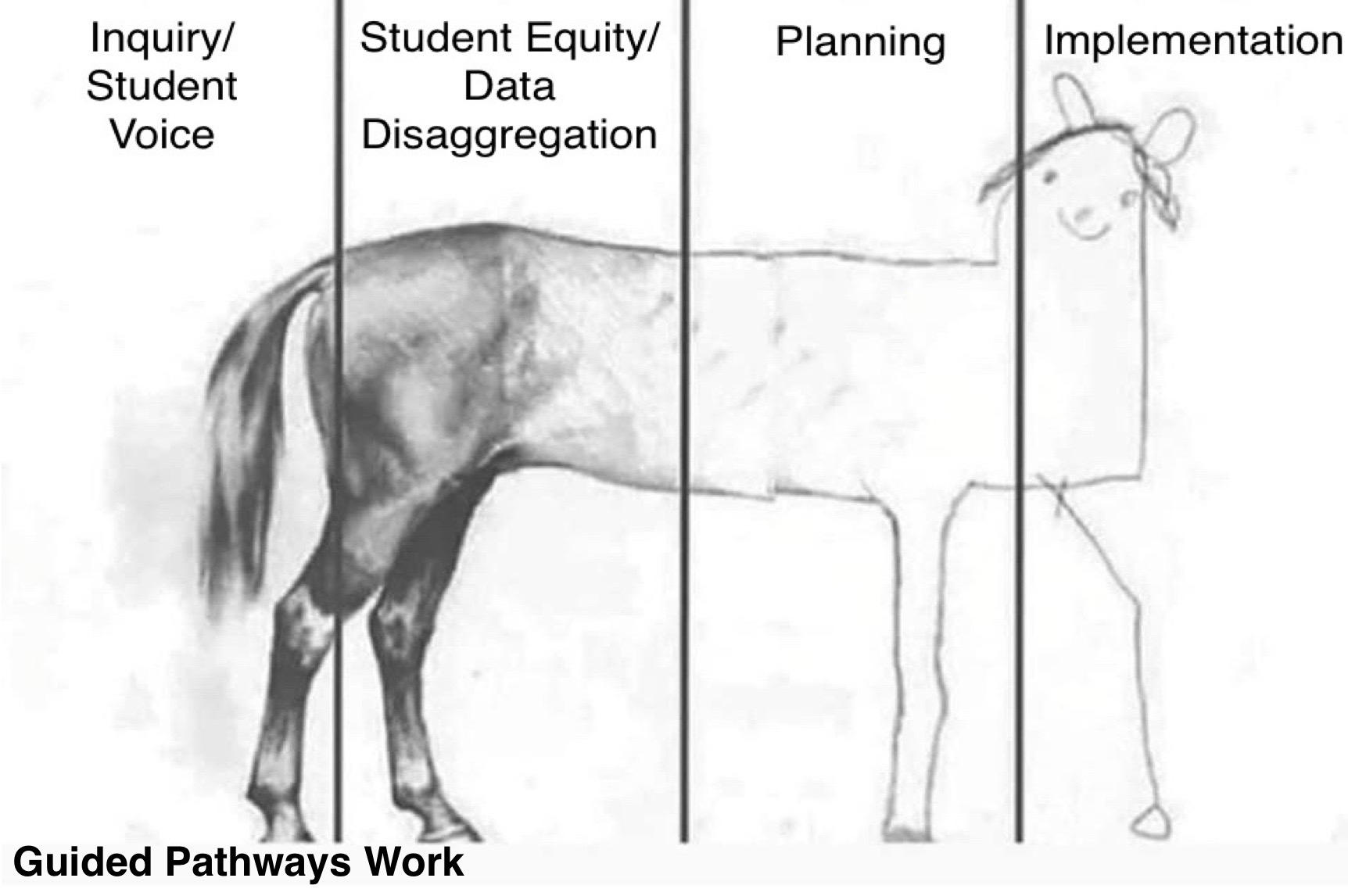Guided Pathways Check List (Yes, During COVID)

(A. Solano)
April 26, 2020
Hundreds of colleges throughout the country have been on a journey to plan and implement Guided Pathways (GP). In most states, they've had to work on GP without additional funding. California is unique. The Chancellor's Office invested millions of dollars to help California community colleges implement GP. Yet, in the midst of COVID, I have lost count of how many college leaders (including faculty) have made a statement like this to me: "I wish the work didn't move so slowly and stall. We'll remain online in the fall. Students would benefit from us having meta-majors and program maps online, but we don't." With so many colleges going into their fourth year of GP funding, they should take stock of implementation. Yes, during COVID! With bureaucratic sacred cows crumbling and political roadblocks dismantling, many campuses have a better chance now and post-COVID to implement a student-centered framework with fidelity and equity.
Here's a checklist.[1] Where does your college stand?
- Organize programs by field to facilitate exploration and engage students in an academic and career community
- Map all programs to good jobs and/or transfer in a major
- Help all new students explore options and interests, make a purposeful program choice
- Help all new students develop a full-program plan in term one
- Create a student-centered schedule and monitor progress based on plans
- Replace prerequisite remediation with teaching students be effective learners in college-level program foundation courses (In California, legislation, AB705, had to be enacted otherwise students, especially of color, would continue to be lost in the remedial wilderness, never to earn a degree or transfer)
- Ensure all new students have a “light the fire” learning experience
- Ensure every student gains program-relevant experience
- Help high school students to explore interests and options, develop a plan, take plan-related courses
I've been arguing for years that the GP fourth pillar, Ensure Learning, is the most important. Where do students spend most of their time? In the classroom.
- Scale high-quality, program-relevant, applied learning experiences
- Provide intentional and sustained student engagement
- High-impact teaching practices implemented across modalities
- Institution-wide implementation of equity-minded, asset-based teaching improvement
- Quality assessment of program learning outcomes that lead to credentials, further education, and/or gainful employment
The data demonstrates that when GP is implemented well where the majority of students are of color (aka, "minority-majority institutions"), these students' success rates go up! That said, it's still important to have specific equity questions, especially at institutions where students of color are the minority. How does your college answer these questions? [2]
- From interest and application to first enrollment:
Is the college reaching out to help underrepresented students in high schools, adult education, and non-credit programs explore the college’s pathways and pursue a program of study? - From entry to program choice:
Are entering underrepresented students entering programs leading to higher remuneration degrees/fields? - From program entry to completion of program requirements:
Do patterns of student program switching result in more or less equitable representation in programs leading to high-remuneration degrees and careers?
Are high- and low-remuneration CC awards being conferred equitably? - From completion of credential to career advancement and further education:
Are post-graduation employment outcomes equitable?
Are transfer and bachelor’s completion outcomes equitable?
In short, does this more or less represent your college's GP work?

Remember, in a sense, GP is an agnostic student-centered framework. There are suggested strategies along the student journey, but HOW those strategies are implemented and how an additional equity lens is applied is up to the institution. Also, I understand that some of the check list items would be difficult to implement during COVID, but there are many that could be worked on immediately and others that could be planned for when we return to a face-to-face college environment.
I can write another article that unpacks why so many colleges have struggled to implement GP--from egos, to lack of clarity, to the influence of unproductive Ivory Tower researcher trash talk, to an ineffective workgroup structure, to outright sabotage. That's all behind us. We're in the middle of a pandemic. Now is the time to put petty arguments aside and unite. There are things I've been wanting colleges to do for years that they've managed to get done in a matter of weeks. This is the time to take an honest stock of the GP checklist and move the work forward.
Students need and deserve it.
Onward...
***
Also visit: Guided Pathways & Equity: Structural & Cultural Change Typology | The "In Between": What’s Needed to Improve Student Outcomes | Guided Pathways Resources
[1][2] Community College Research Center, Columbia University.






